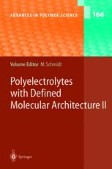Search
Search Results
-
Development of Effective Depressor Additives to Diesel Fuel, Based on Copolymers of Stearyl Methacrylate with Monomers of Various Structures
AbstractDepressor additives based on stearyl methacrylate homopolymer and its copolymers with various monomers (butyl methacrylate, methacrylic acid...

-
Well-defined poly(stearyl methacrylate-co-glycidyl methacrylate) obtained by ATRP as a complex additive for hydrotreated diesel fuel
In the present work reversible-deactivation radical copolymerization of stearyl methacrylate with glycidyl methacrylate via atom transfer radical...

-
Evaluation of block copolymer and homopolymer of stearyl methacrylate as multifunctional additives for lubricating oil
The polymeric additives prepared from renewable feedstock having multifunctional applicability attracted significant attention in the lubricant...

-
Influence of Composition of Copolymers of Glycidyl Methacrylate and Alkyl Methacrylates on the Free Energy and Lyophilic Properties of the Coatings
AbstractThe use of reactive copolymers of glycidyl methacrylate and alkyl methacrylates differing in the length of the alkyl substituent (С6–С18) has...

-
Synthesis of Stearyl Methacrylate–Glycidyl Methacrylate Copolymers and Their Use as Multifunctional Additives to Diesel Fuel
AbstractStearyl methacrylate–glycidyl methacrylate copolymers were synthesized by controlled atom transfer radical polymerization. These copolymers...

-
Evaluation of renewable feedstock-derived copolymers of stearyl methacrylate-co-triglyceride as multifunctional green additives in lubricant
The greener additives synthesized from bio-sources with low-cost and multifunctional applications have attracted considerable attention in the field...

-
Highly Hydrophobic and Superhydrophobic Coatings Based on Linseed Oil and Copolymers of Glycidyl Methacrylate and (Fluoro)Alkyl Methacrylates for Wood Surfaces
AbstractThe paper discusses the formation of hydrophobic coatings based on linseed oil and copolymers of glycidyl methacrylate and (fluoro)alkyl...

-
Synthesis of Block Copolymers
This review highlights recent (2000-2004) advances and developments regarding the synthesis of block copolymers with both linear [AB diblocks, ABA...
-
Biodegradation Control of Chitosan Materials by Surface Modification with Copolymers of Glycidyl Methacrylate and Alkyl Methacrylates
Chitosan is a promising polymer from natural polysaccharides, which is an environmentally friendly compound from renewable raw materials. Chitosan...
-
Controlled Radical Polymerization of Lauryl Methacrylate in the Synthetic Polyalphaolefin Base Oil
AbstractControlled radical polymerization of lauryl methacrylate in polyalphaolefin base oil has been performed for the first time in the presence of...

-
Synthesis of functional fluorinated copolymers with different microstructure via reversible addition-fragmentation chain transfer (RAFT) process
Fluoropolymers are attractive due to their high resistance to external influences. However, they are poorly compatible with other materials (for...

-
Reversible Deactivation Radical Copolymerization: Synthesis of Copolymers with Controlled Unit Sequence
AbstractThe review addresses the synthesis of copolymers with the controlled distribution of monomer units (random, gradient, block-random,...
-
The Superhydrophobic State Stability of Coatings Based on Copolymers of Glycidyl Methacrylate and Alkyl Methacrylates on Cotton Fabric Surface
We suggest a simple and reproducible strategy for fabricating durable superhydrophobic coatings on the basis of series of functional random...
-
Graft copolymerization of methyl methacrylate and vinyltriethoxysilane binary monomers onto natural rubber
This work presents two different paths of graft-copolymerization of methyl methacrylate (MMA) and vinyltriethoxysilane (VTES) binary monomers onto...

-
Combining Renewable Ethyl Cellulose and Acrylate to Fabricate Sustainable TPEs via Controlled Polymerization
AbstractA series of ethyl cellulose (EC) grafted copolymers were fabricated with methyl methacrylate (MMA), stearyl methacrylate (SMA) and EC grafted...

-
Polyelectrolyte Block Copolymer Micelles
Polyelectrolyte block copolymers form micelles and vesicles in aqueous solutions. Micelle formation and micellar structure depends on various...
-
Limited Fraction of Crystallized Side Chains in Bottlebrush Poly(n-alkyl methacrylate)s
Crystallinity of bottlebrush polymers due to side chain crystallization has been considered to be related to the length of the side chains only under...
-
Controlled Synthesis of Polymers on the Basis of Stearyl Methacrylate and Their Use as Depressor Additives
AbstractThe controlled synthesis of poly(stearyl methacrylate) and stearyl methacrylate–acrylonitrile copolymers is conducted using a catalytic...

-
A visible-light photoinduced controlled radical polymerization using recyclable MIL-100 (Fe) metal–organic frameworks
Controlled polymer techniques have significantly advanced thanks to using the energy of light to control radical polymerizations. Although many...

-
Synthesis of linear block copolymers from methacrylic monomers using 4,6-di-tert-butyl-N-2,6-diisopropylphenyl)-o-iminobenzoquinone
Polymers based on methacrylic monomers were synthesized using 4,6-di- tert -butyl- N -(2,6-diisopropylphenyl)- o -iminobenzoquinone. They can be used for...
